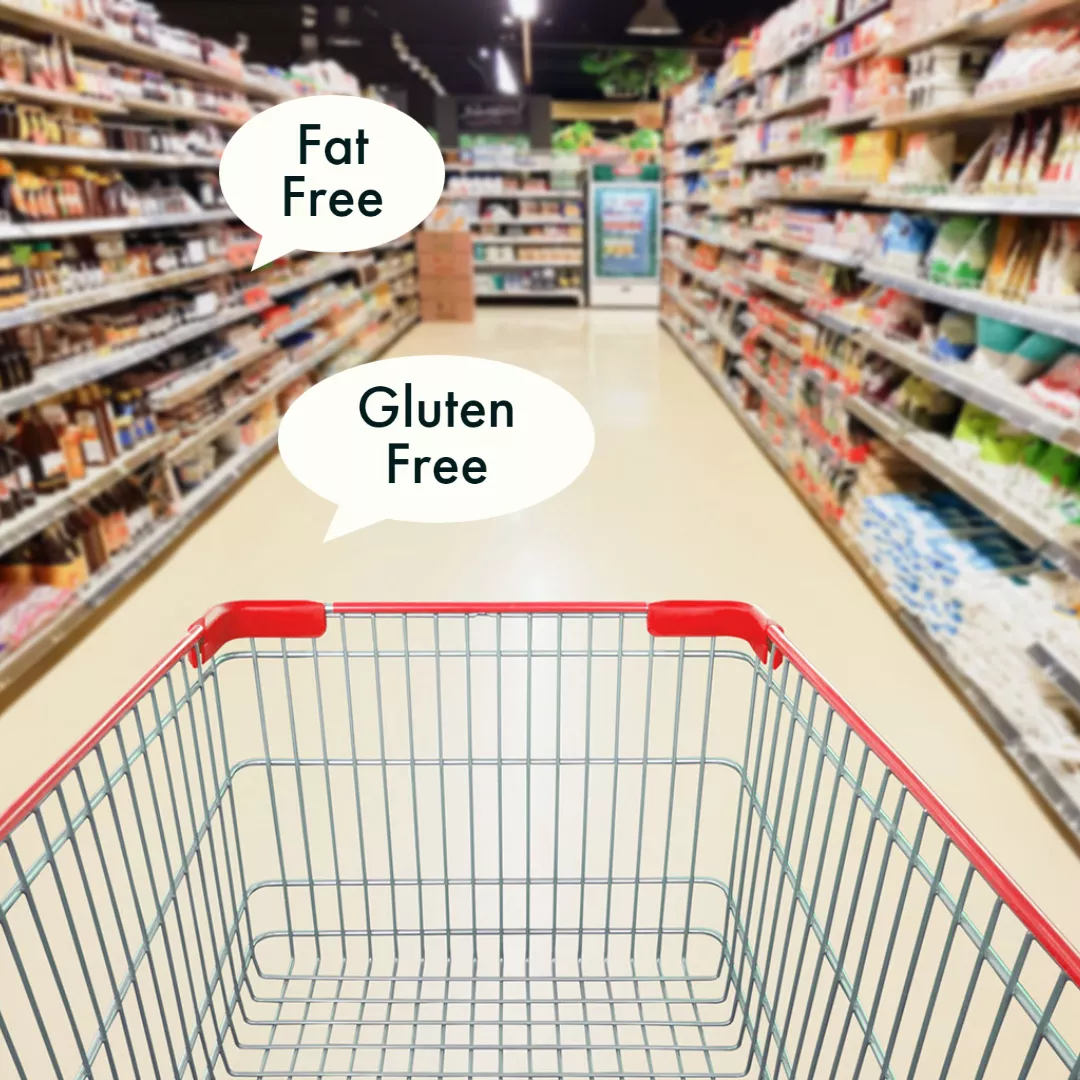
What To Look For In A Nutrition Label
Nutrition Labels
If you’re rushing through the grocery aisles, choosing your food items based on their packaging, you might be currently falling into the trap set up by food industries to make not-so-healthy food seem more appealing.
Labels such as “high in protein”, “gluten free” or “fat free” seem worthy of your diet.
Not so fast.
Take time to read the nutrition labels found on the front and back of your packaged foods. As a general rule, the more packaged and easier to cook, the more processed the item is, so steer away from them and try to choose fresh foods that don’t even have a label, such as fruit and vegetables.
However if you do try to read your nutrition labels, make sure you know which nutrients you should be cautious of, such as;
- Salt
- Sugar
- Fats
Consuming too much of these nutrients has been linked with increased risks of heart disease, diabetes and stroke.
Knowing what to look for in a nutrition label is important to make your experience at the grocery store more efficient and less confusing.
Here’s what you need to consider;
1.Serving Size
Know how many servings are in a whole packet
This will allow you to be mindful of the total calories you are going to eat if you dive in to a whole packet of crisps while watching your favourite series.
Consider the packet of crisps below as an example.
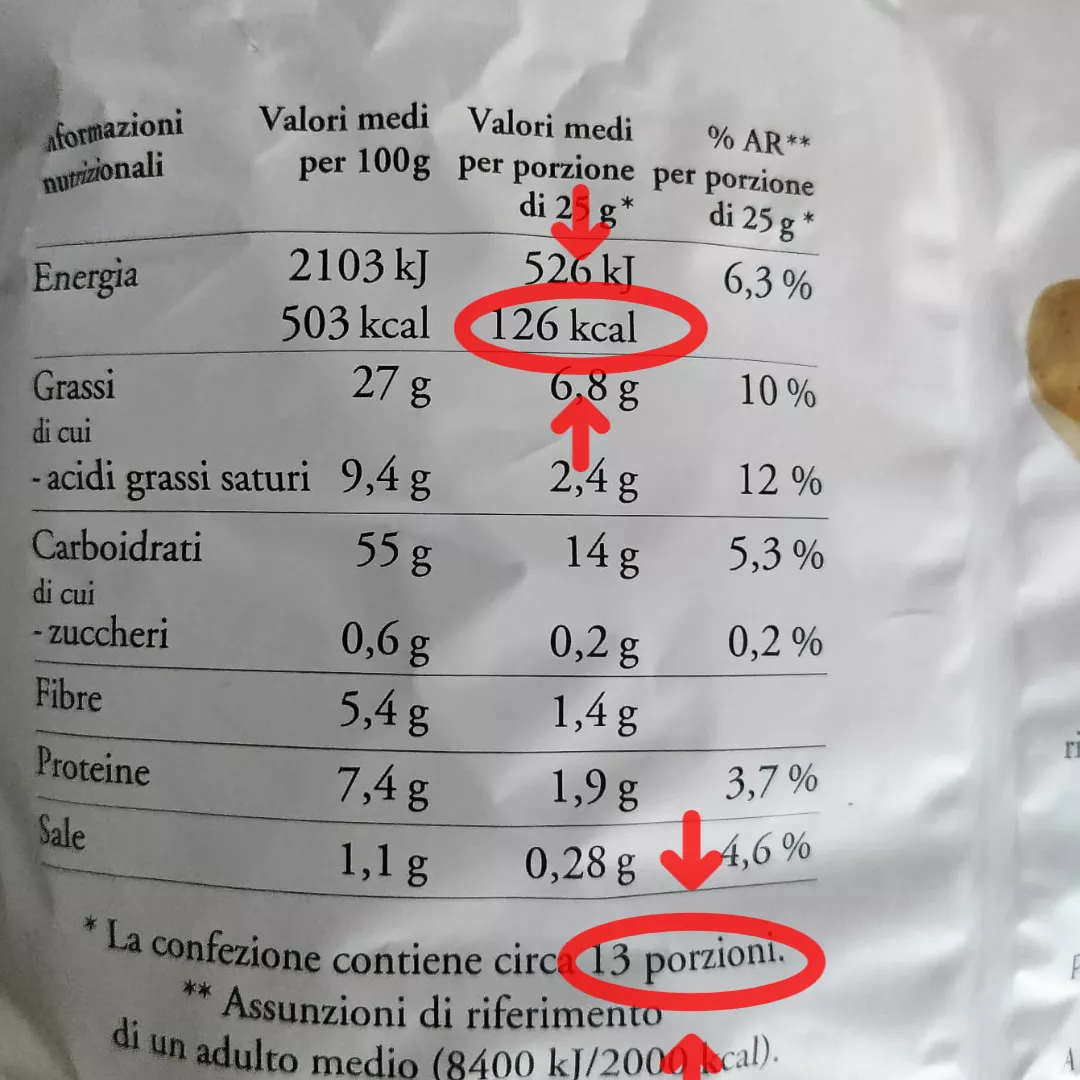
1 serving (25g) contains 126kcals
The whole packet contains 13 servings of 25g each
126kcals x 13 servings = 1,638kcals eaten
As a Rule;
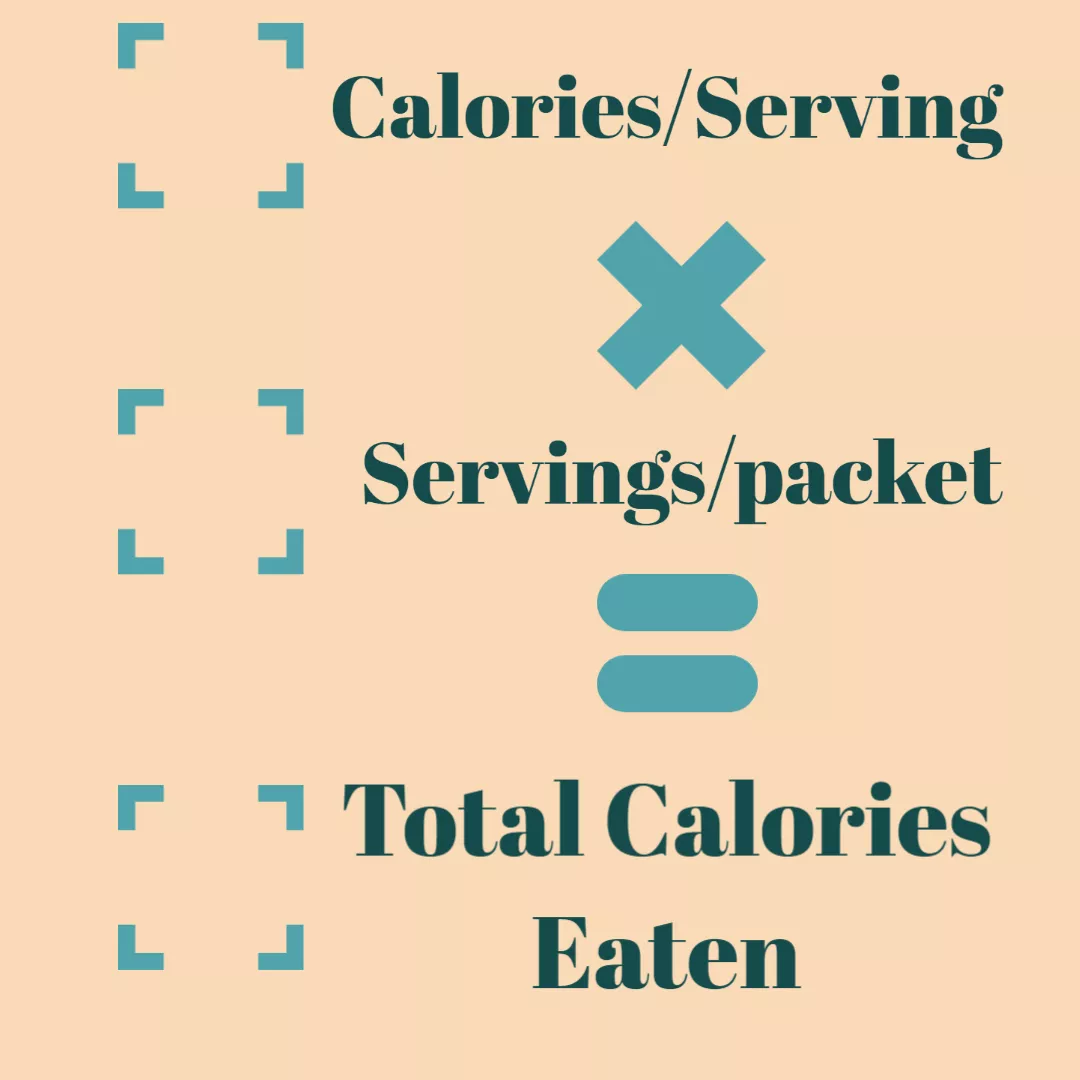
Not paying attention to the serving sizes can easily lead to overeating. This is one of the commonest ways people tend to overeat when following a diet, since they fail to notice from where the surplus calories are originating.
2.Sugar
Not all sugar is the same.
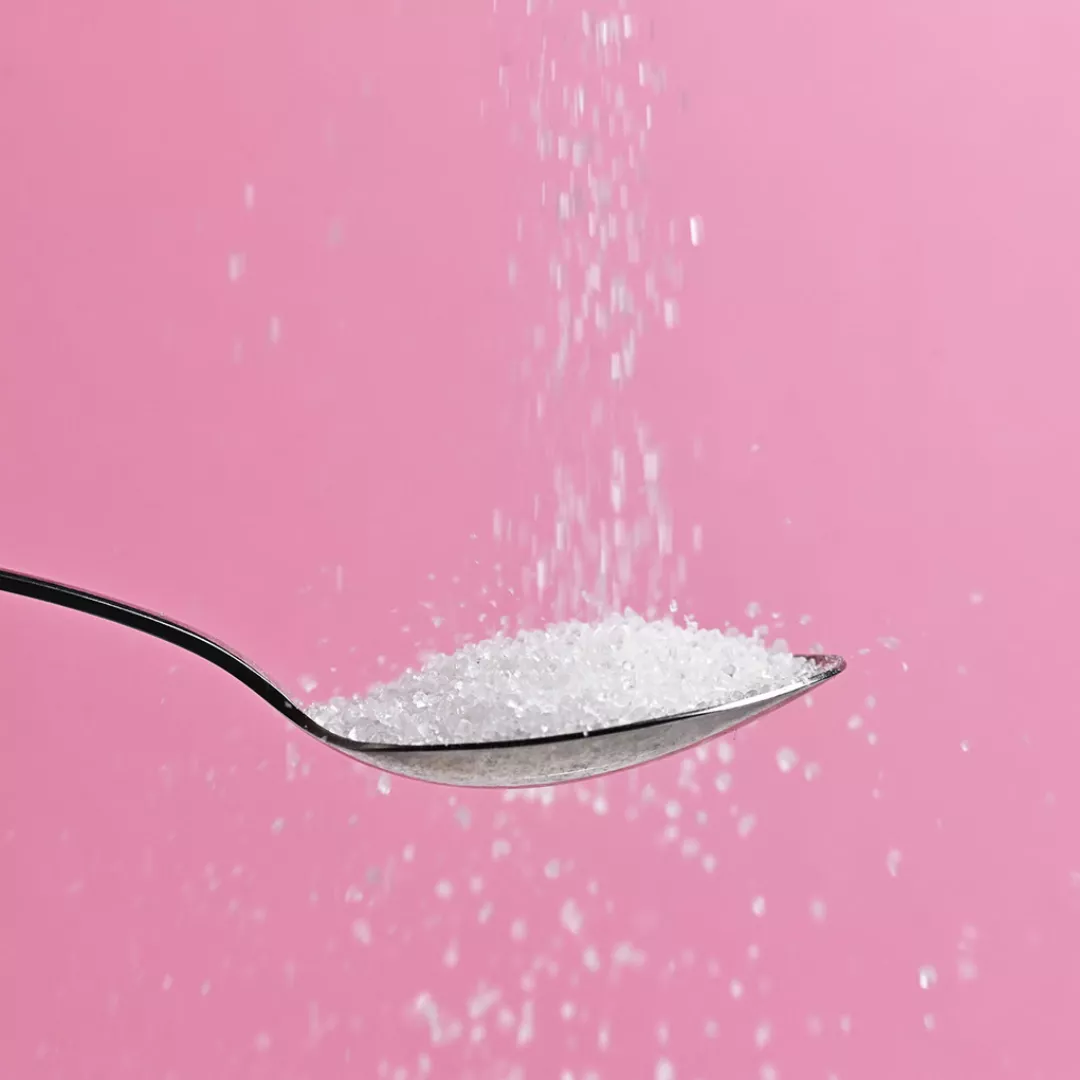
Foods like milk and fruits contain natural sugars (lactose/fructose) together with other nutrients. Added sugars on the other hand, are added to food in the form of table sugar, corn syrup and dextrose.
If a food item contains;
- More than 22.5g of total sugars per 100g -> item high in sugar
- 5g or less of total sugars per 100g -> item low in sugar
Sugars are usually listed as total sugars underneath the carbohydrate content.
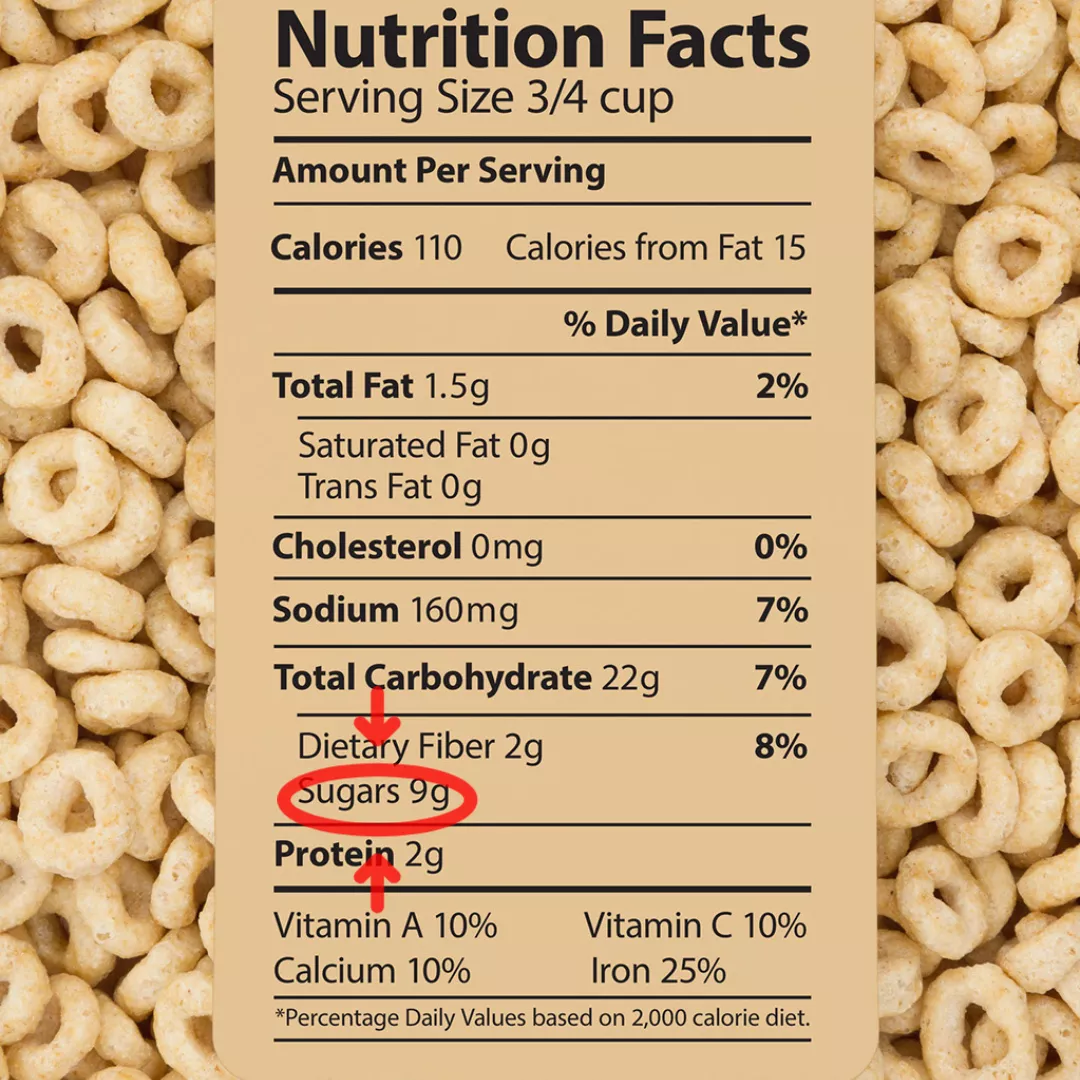
3.Carbohydrates
Fibre and sugars are usually listed as part of the carbohydrate content. Noting whether the majority of the carbohydrates originate from fibre or from sugar is important. As a general rule, the higher the fibre and the lower the sugar content, the better. Fibre is usually found naturally in wholegrains, fruit and vegetables.
4.Gluten Free - is it the healthier option?
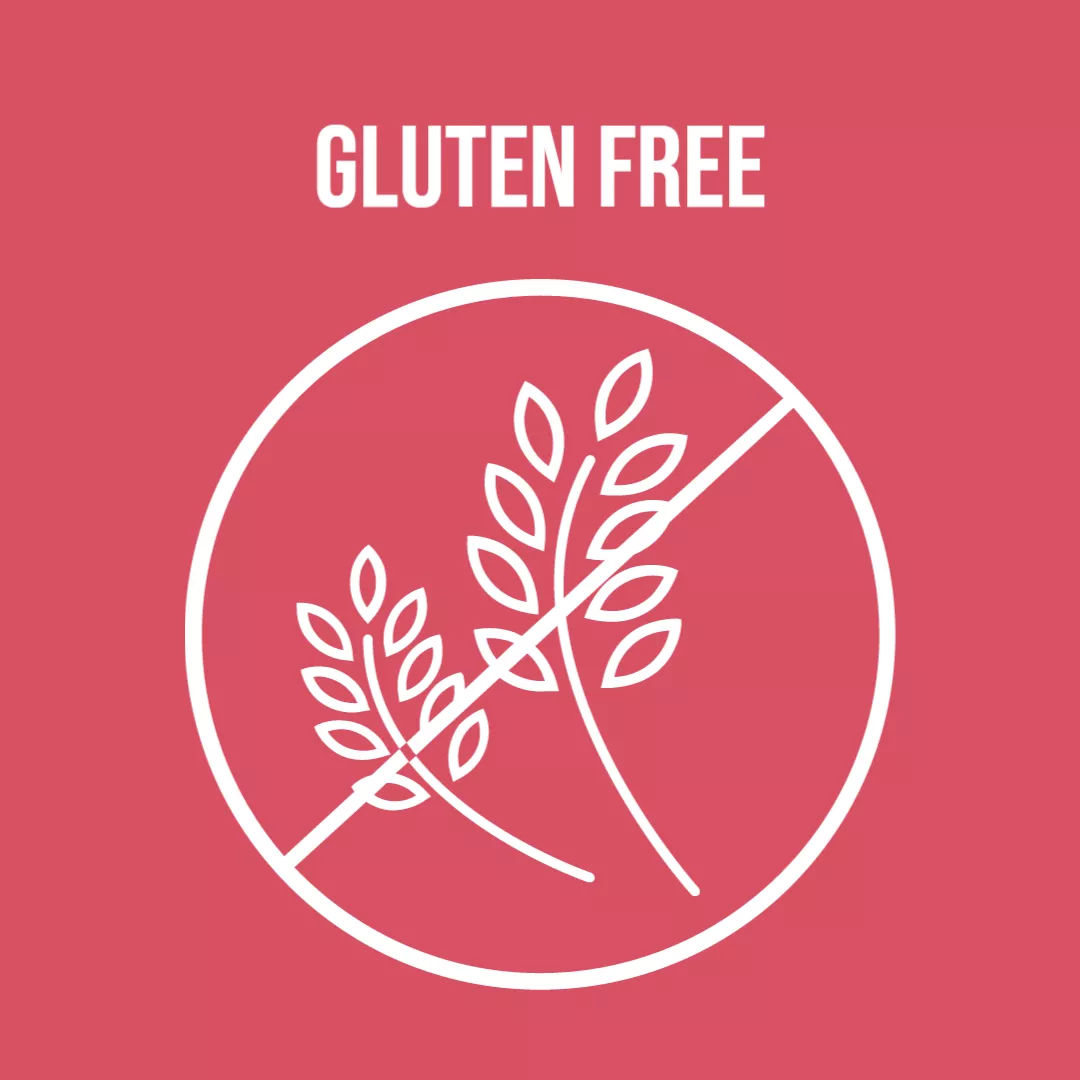
You do not need to choose gluten free items as a healthier option. This is not true. Many marketing strategies used the term “gluten-free” to sell their item as the healthier option with respect to their competitors. For example, a bag of apples is naturally gluten-free, however food industries have used the gluten-free label even on foods that are obviously gluten free to make them more attractive and sometimes pricier. If you’re not suffering from coeliac disease or are gluten intolerant, then you do not need to opt for gluten free foods. In order to replace gluten in bread, manufacturers often add corn syrup or sugar instead, so be careful, gluten free options might not aid your waist line.
5.Saturated fats
Fats are split into saturated and unsaturated fats. Saturated fats originate from meat and dairy products, whereas unsaturated fats are from plant origin. Food labels list the total fat content together with its saturated portion as a subgroup. Ocassionally some food labels also list trans fats - these are usually added in processed and hardened vegetable fats which are used in cakes, biscuits and fast foods to prolong their shelf life. When grocery shopping we should look for foods that are low in saturated fat and trans fats since both types of fats have shown that they contribute to increased risk of heart disease, weight gain and stroke.
The image below shows the nutrition label of unsweetened almond milk;
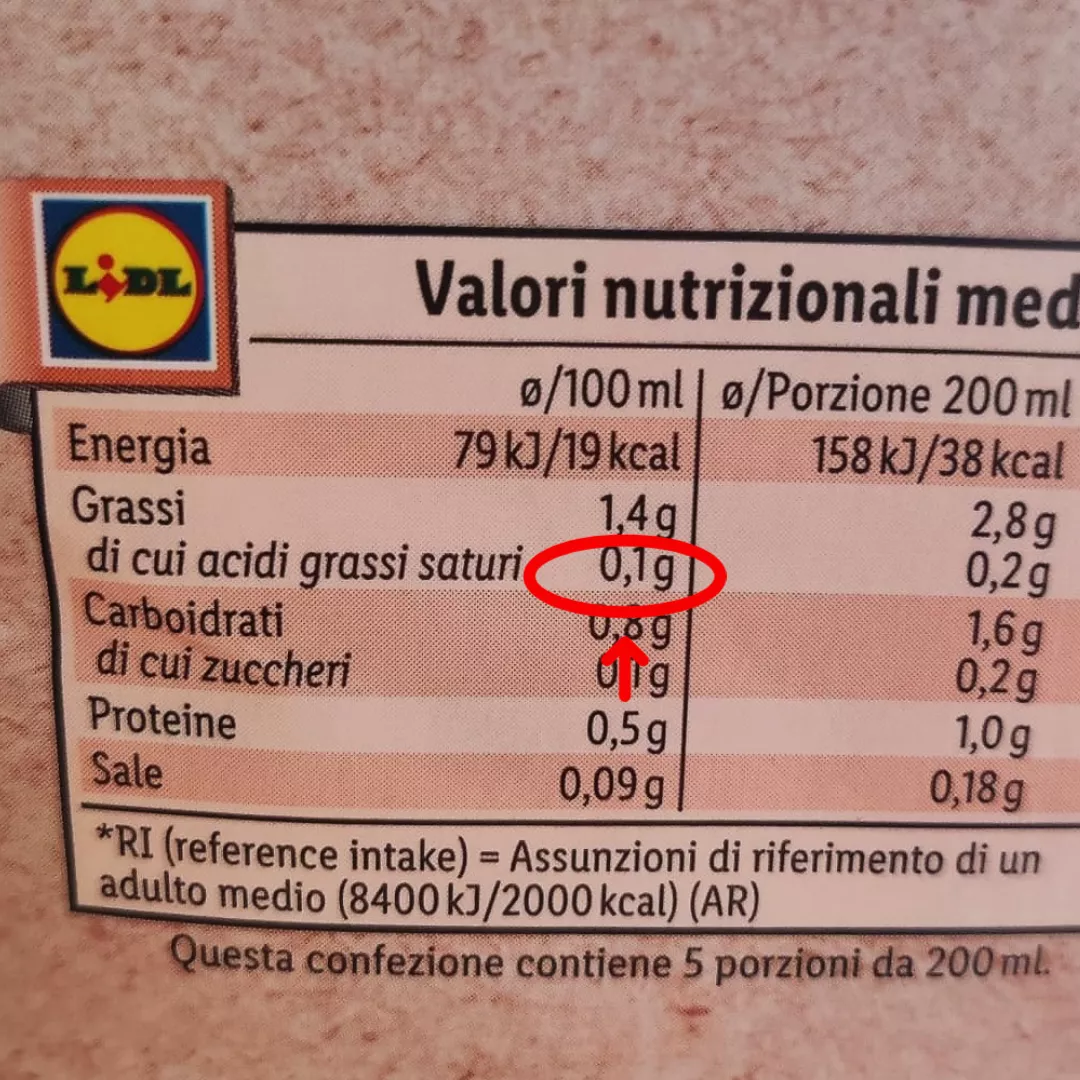
As you can see it has a total of 1.4g of fat, of which 0.1g is saturated. This means that the remaining portion is made up of healthy monounsaturated and polyunsaturated fats.
The image below shows the nutrition label of a packet of crisps;
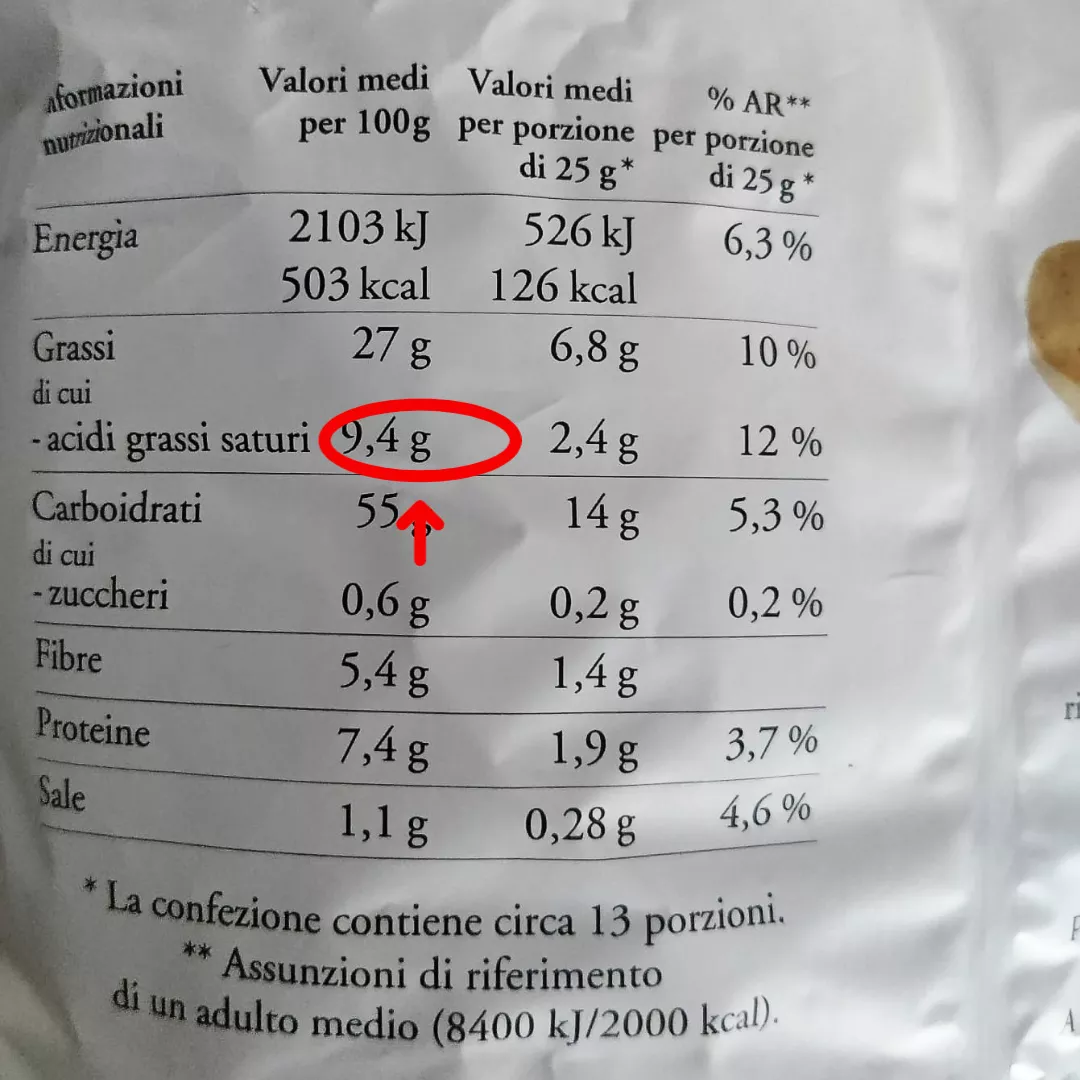
It has a total of 27g of fat, a third of which (9.4g) is saturated.
As a general rule, the lower the saturated fat portion of the total fats, the higher the monounsaturated and polyunsaturated fats present. Monounsaturated and polyunsaturated fats are healthy fats that help mop up the bad cholesterol in the body and promote healthy arteries.
If a food item contains;
- More than 5g of saturated fat per 100g -> high in saturated fats
- 1.5g or less of saturated fats per 100g -> low in saturated fats
6.% Recommended Intake (RI) / Daily Recommended Value (DRV)
% RI/DRV indicates what percentage of your daily nutritional needs is being provided by the food item. As an example, a cup of 240ml whole milk provides 10% of the individual’s daily need for fat and 30% of the individual’s daily need for calcium.
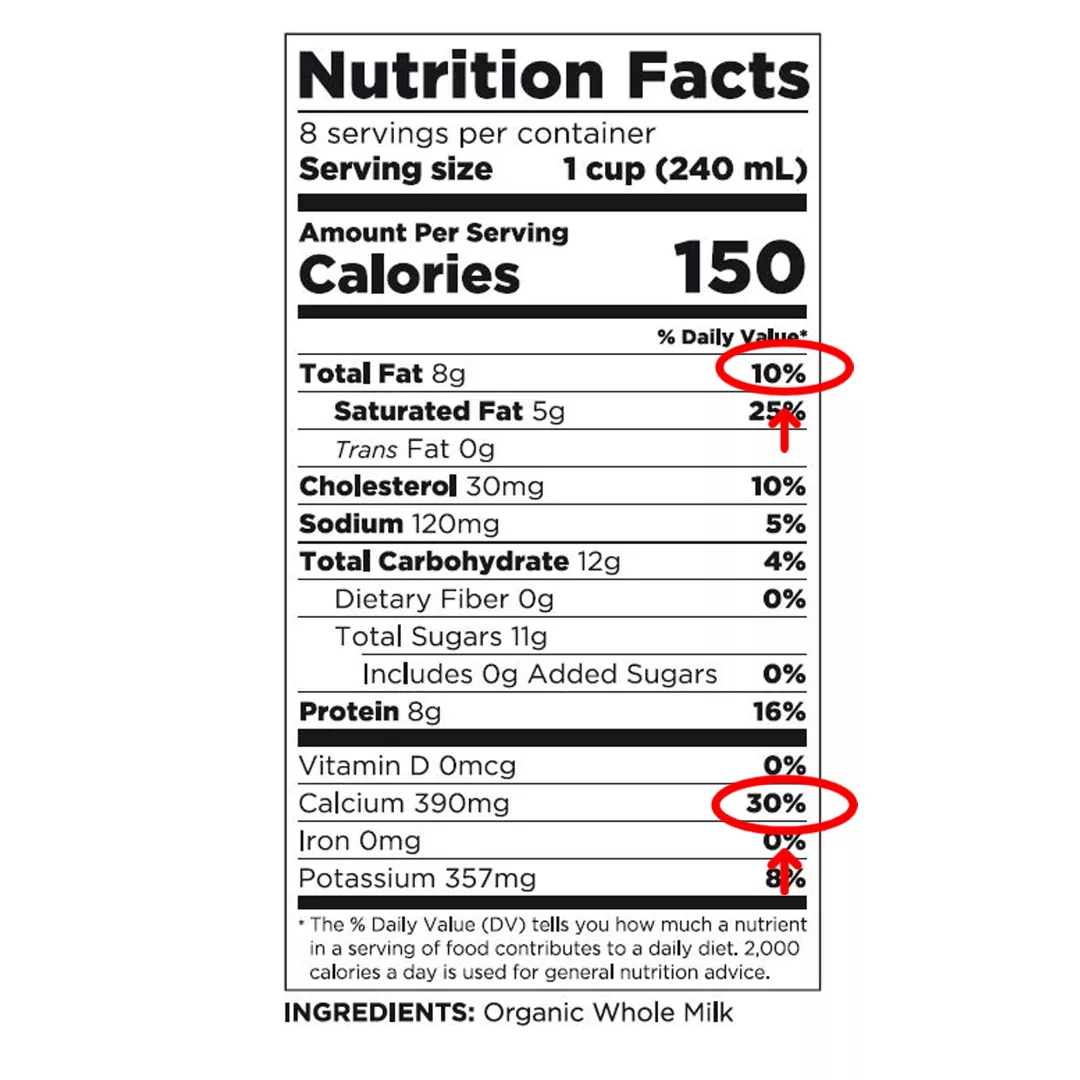
However, note that % RI/DRV is based on a 2000kcal diet not your individual needs. So, if you are eating less than 2000kcal, your %DRV will be higher than what you see on the label. If you are eating more calories, the %DRV will be lower. In order for the %DRV to be practical, you need to know exactly how many calories you are consuming. To avoid having to do these calculations, I recommend using fitness apps to log in your diet, and they will automatically calculate your %DRVs.
7.Protein
Foods high in protein will help you function smoother for longer. Protein helps increase your satiety, keeping you fuller for longer, promote muscle repair and maintain energy levels. Many weight loss diets recommend looking for protein on nutrition labels, and choosing foods that have a high portion of their calories coming from it. Having a diet high in protein has shown to help mantain lean muscle whilst losing excess fat.
An excellent example is this food label below showing 11gr of protein per 100gr of yoghurt.
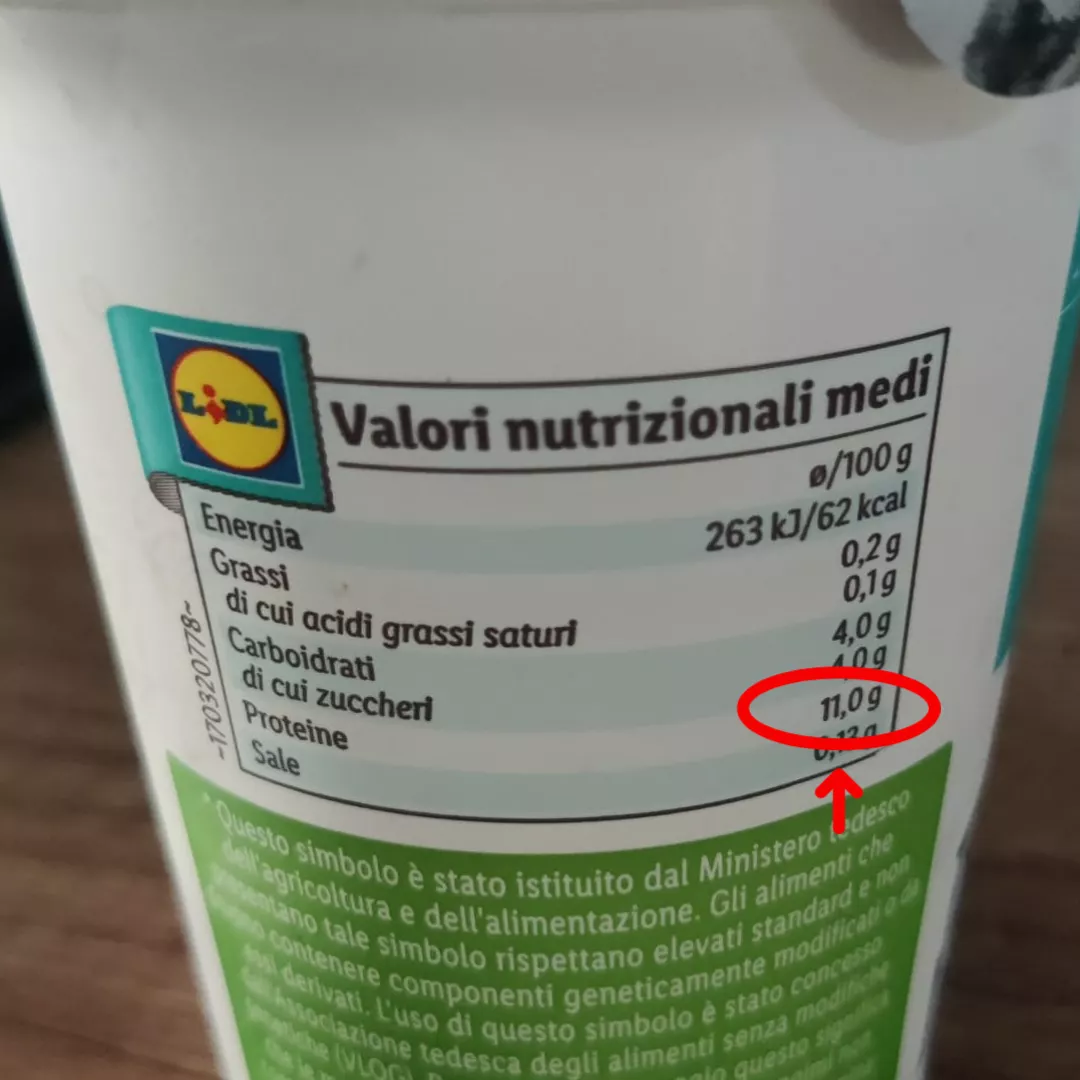
For average-weight adults it is recommended that women consume ~45g protein/day and men ~56g protein/day. To find out what you specifically require, multiply 0.75g of protein x your bodyweight in kg, to know how much protein you require daily.
These tips aimed to help you understand better different parts of a nutrition label. Not all labels are presented in the same way, but knowing the terms might help you understand them better. If you need any more information or guidance with your nutrition label reading, do not hesitate to leave me a message on my contact page.

